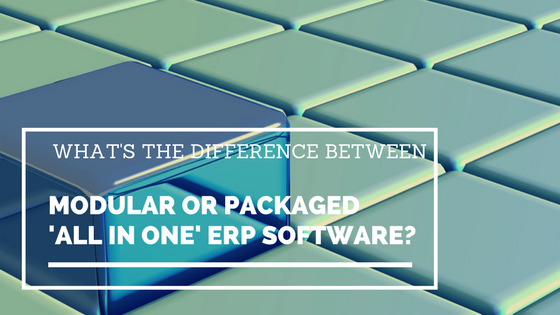Fears of an impending economic downturn has persisted for the past couple of years, and the latest predictions are pointing towards the possible emergence of a recession in 2024. Despite continuing growth, a slowing inflation rate and more optimistic consumer sentiments in recent days, many CEOs are still bracing for a “short and shallow” downturn within the next 12 to 18 months.
In the face of such uncertainty about the global economy, and the continued prospect of a global recession – however “short and shallow” – small- to medium-sized enterprises (SMEs) like your business need to consider your planning, budgeting and forecasting (PB&F) processes with that in mind.
Here’s a few questions you should ask yourself when you’re doing your business planning, budgeting, and forecasting for your SME this year.
- How Is My Business Positioned Financially?
- How Can I Cut Costs WIthout Reducing Headcount Or Impacting Operations?
- Which Parts Of My Business Are More Recession-proof?
- What Contingency Plans Does My SME Have In Place?
1. How Is My Business Positioned Financially?
%20(1)%20(1).jpg?width=1000&height=666&name=shutterstock_1030862590_1920_compressed%20(4)%20(1)%20(1).jpg)
Your SME's financial position is anchored by a clear understanding of its current financial status. This serves as the foundation for crafting resilient strategies moving forward.
A key component of this position is the cash flow. Regularly monitoring cash flow is of paramount importance. When a business maintains a consistent positive cash flow, it ensures the capacity to meet short-term commitments and also provides the flexibility to capitalize on growth opportunities.
Furthermore, reserves play a crucial role in your business’s financial health. They act as a protective financial cushion. By evaluating the strength and adequacy of these reserves, you can ascertain the duration your SME can navigate a potential economic downturn without significant operational disruptions.
Lastly, understanding access to credit is another pivotal aspect. Being keenly aware of your business's credit situation means you have the ability to tap into borrowed funds when the situation demands. This provides a crucial safety net during financially challenging times.
How Does An ERP Software Help Me Understand My Business’s Financial Position?
A modern ERP software, such as Microsoft Dynamics 365 Business Central, can serve as a powerful tool to help you gain a comprehensive understanding of your SME’s financial situation, and it accomplishes this through several pivotal features.
At its core, an ERP software seamlessly consolidates data across various departments and functions of your business. By unifying this information on a singular platform, you are provided with a single source of truth into your company's finances.
Moreover, its ability to provide real-time financial data enables your finance professionals to access up-to-the-minute details on crucial metrics such as revenue, expenditures, and cash flow.
This ensures they’re not only working with the freshest data when carrying out PB&F, it also gives them the opportunity to update their budgets and forecasts as new data comes in.
2. How Can I Cut Costs Without Reducing Headcount Or Impacting Business Operations?
%20(1).webp?width=1000&height=525&name=Process%20Optimization%20(1)%20(1).webp) Examples of process optimization; Source: Kissflow Inc
Examples of process optimization; Source: Kissflow Inc
In the pursuit of cost-saving, it's vital first to look beyond workforce reductions and seek avenues that allow for savings without compromising growth potential.
One effective strategy involves process optimisation. By closely reviewing your operational processes and workflows, you can pinpoint inefficiencies. Addressing these, whether it's by eliminating bottlenecks, simplifying existing tasks, or automating repetitive procedures, can translate into considerable savings.
Another avenue to explore is your relationship with suppliers and vendors. Consider renegotiating existing contracts. This might involve discussing bulk purchase discounts, extending payment terms, or even venturing out to identify alternative suppliers who offer more competitive pricing.
Additionally, reevaluate non-essential expenditures. Often, costs associated with business trips, certain office perks, or non-urgent training sessions and conferences can be trimmed without harming the core of your operations.
How Can An ERP Software Help You Cut Costs?
One of the primary benefits of ERP software is their ability to streamline and automate numerous processes in your SME. By integrating various business functions and departments, the software eliminates redundancies, reduces manual intervention, and ultimately leads to quicker and more efficient operations. This not only simplifies tasks, but can also lead to substantial cost reductions.
Moreover, another key advantage of ERP software lies in its capacity to offer real-time insights, particularly concerning purchasing processes. Having immediate access to such information ensures that businesses can make well-informed decisions regarding their procurement activities. By analysing purchasing patterns, identifying optimal suppliers, or spotting potential inefficiencies, companies can make strategic decisions that further drive down costs.
3. Which Parts Of My Business Are More Recession-proof?
%20(1)%20(1).jpg?width=1000&height=666&name=shutterstock_1014291436_1920_compressed%20(3)%20(1)%20(1).jpg)
To determine the segments of your business that are more insulated against economic downturns, it's pivotal to identify and strengthen areas that have historically shown resilience during such times. While complete immunity to recessions is an idealistic notion, possessing insight into the more resilient facets of your business can equip you with a strategy that's better tailored to navigate economic downturns.
Start by scrutinising your historical sales data. Reflect on the performance of your products or services during past economic slumps. Were there offerings that either maintained steady sales or perhaps even witnessed a surge in demand? Such trends can be illuminating.
Next, embark on a segmentation analysis of your customer base. By categorizing your clientele based on demographics, geographics, and purchasing behaviours, you might discover that certain segments consistently remain buoyant even when the economic tide is low.
Furthermore, diversification is often a key to stability. Assess your revenue streams, paying close attention to any that have demonstrated a dependable cash flow. Revenue models that promote recurring income, such as subscription services or retainer agreements, often showcase more stability during fiscal downturns.
How Can Power BI Help You Identify Resilient Parts Of Your SME?
A short demo on Microsoft Power BI's features; Source: AFON IT
A business intelligence (BI) tool such as Microsoft Power BI can play a crucial role in helping you recognise which are the most robust parts of your SME, especially during challenging times.
Power BI’s data visualisation capabilities allows you to leverage craft interactive and compelling dashboards and reports that present data in an easily digestible manner. By visually representing data, businesses can swiftly comprehend their present status, discern developing trends, and act based on real-time information.
Moreover, Power BI seamlessly connects to a diverse range of data sources across your SME, from databases and cloud services to spreadsheets. This gives you a comprehensive perspective of your entire business operation, making it easier to pinpoint vulnerabilities and areas ripe for enhancement, and ensuring that your SME is better prepared for various scenarios.
Lastly, in turbulent times, how a business allocates its resources can be the difference between stagnation and progression. Power BI excels in offering data-driven insights into how your SME’s resources are being utilised. This enables you to optimise the distribution of your SME’s assets, ensuring that they're channelling resources in a manner that maximises business continuity and resilience.
4. What Contingency Plans Does My SME Have In Place?
%20(1).webp?width=1000&height=599&name=scenario%20planning%20graphic%20(1)%20(1).webp) Overview of Scenario Planning; Source: SME Strategy Consulting
Overview of Scenario Planning; Source: SME Strategy Consulting
In the unpredictable landscape of business, particularly during economic downturns, it's crucial for SMEs like yours to be equipped with contingency plans that provide flexibility and foresight.
One of the primary measures you should implement is to create budgets that span across multiple scenarios. This includes a 'best case' budget that operates under optimistic projections, a 'likely case' that hinges on realistic expectations, and a 'worst case' budget that prepares us for the most challenging economic situations.
Moreover, you should undertake comprehensive scenario planning. Map out both short-term and long-term economic trajectories, and model how each would influence our revenues, expenses, cash flows, and other vital financial indicators. This forward-thinking approach would allow you to then pivot and adapt as conditions change.
Finally, recognise the importance of liquidity in trying times, and ramp up your cash flow forecasting efforts. This may involved shifting to more frequent forecasting intervals, which can help you more easily identify and thus preemptively address any potential cash flow challenges.
How An ERP Software Helps In Financial Contingency Planning
ERP software can play a pivotal role in the financial contingency planning of your SME, as it offers tools and features that aid in proactive and reactive strategies.
At its core, one of the primary advantages of ERP software is the provision of real-time or near-real-time data updates. As situations evolve, especially in times of crisis, having access to the most recent data becomes invaluable. This real-time monitoring allows your finance professionals to closely watch unfolding events, ensuring they can make swift decisions and react appropriately.
Furthermore, as we delve deeper into the complexities of financial contingency planning, scenario analysis emerges as a vital component. Modern ERP software are equipped with robust analytics and reporting functionalities, which your SME can harness these capabilities to model various disruptions and anticipate their possible repercussions. Through such scenario analyses, your decision-makers are equipped to weigh different options and determine the best course of action based on potential outcomes.
Lastly, the intricate nature of contingency planning necessitates thorough documentation. From outlining specific procedures and recovery strategies to maintaining essential contact lists, having this information on hand is paramount. An ERP software which offers document management features serves as a centralised repository for these crucial documents. This ensures that when the need arises, vital information is at the fingertips of those who require it, facilitating a coordinated and efficient response.
Here's A Guide To Some Of The Tools That Will Be Useful For A Finance Leader Like Yourself.
Ask The Right Questions And Get The Right Tools To Help Your SME Weather Any Uncertainty
%20(1)-1.jpg?width=1000&height=666&name=shutterstock_1065060950_1920_compressed%20(1)%20(1)-1.jpg)
The prospect of an economic downturn and possible recession in 2024 might seem daunting. However, by taking the possibility into account and preparing for it accordingly in your PB&F processes, you can empower your SME to not only survive but even thrive, in spite of uncertain circumstances.
By addressing the key questions of your SME’s present financial position, whether there are ways to save on costs without cutting headcount or compromising operations, which parts of your business are more resilient, and what contingency plans you have in place, you can transform such uncertainty into new opportunities for the continued success of your SMEs.
A modern ERP software such as Business Central, or a BI solution such as Power BI, can be invaluable tools for helping you obtain the insights that answers these key questions, as well as to follow up on them in your PB&F process.
The ability of ERP software to unify data and provide a single source of truth in real-time gives you the data-driven insights you need to plan for every eventuality, and Power BI’s data visualisation helps you quickly pinpoint which parts of your SME are more or less resilient to the impact of an economic downturn, if and when it comes.
To find out what other benefits a modern ERP software like Microsoft Dynamics 365 Business Central can offer your business, click on the image below to download the factsheet.




